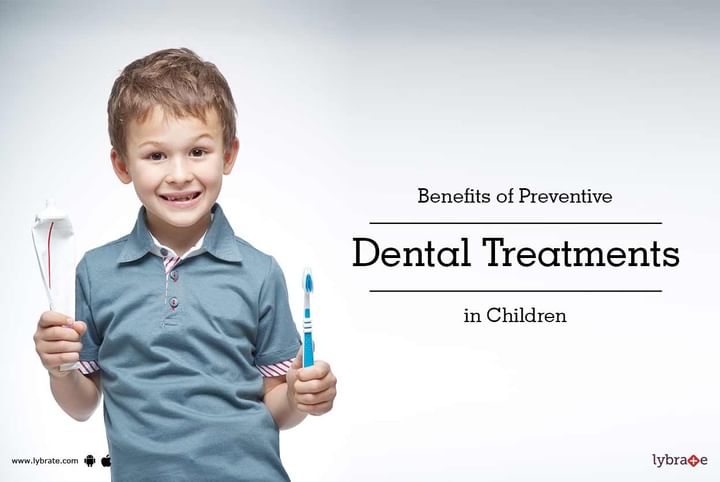Get the App
For Doctors
Login/Sign-up
Last Updated: Jan 10, 2023
BookMark
Report
Benefits of Preventive Dental Treatments in Children
The primary or milk teeth begins to erupt at about 6 months of life with the complete set in place by 2.5 years of age, and the entire set is replaced by the age of 14. The benefits of some of the preventive dental measures are outlined below.
- Maternal care during pregnancy: The teeth begin to form during the second trimester of pregnancy. It is very important that the maternal diet includes sufficient amounts of calcium, potassium, and fluoride for optimal tooth mineralization. Good tooth structure has greater resistance to decay than hypomineralized teeth.
- Routine oral hygiene: For the first 6 months, though there are no teeth, after each nursing, end it with a spoonful or two of water to wash down the milk. Gradually, the gums can be just wiped with a gauze pad or soft cotton to remove any residual bacteria. The baby also gets used to this habit, and once the teeth are in, there are lesser bacteria for the decay process to begin. Once the teeth begin to erupt, the nursing habits also need to be modified to ensure the baby is not allowed to go to sleep with a bottle. This is a common practice to put the baby to sleep and should be avoided to reduce the occurrence of nursing bottle caries.
- Fluoride application: Fluoride has been shown to have significant benefits in preventing caries. Once routine dental visits begin, then the dentist will be able to tell if fluoride needs to be applied. This can happen either in the form of a gel or varnish that is applied in the dental office or as a paste that is used at home. This helps in building resistance to decay.
- Pit and fissure sealants: The tooth has a number of pits and fissures which are 8 times more vulnerable to decay than other surfaces. Deep pits are shown to harbor more bacteria and thereby greater incidence of caries. There are sealants which are thin resins that can be applied on the tooth, which can reduce bacteria accumulation and further decay.
- Space maintainers: In the event that a child has lost a tooth, either due to trauma or decay and subsequent infection, then a space maintainer should be placed within the next 3 months. This helps in maintaining the space and establishing a good bite during the transition phase and later, once the permanent teeth are in place.
- Orthodontic treatment: If there is malocclusion, then early intervention helps by reducing treatment time and getting better results as the teeth and periodontium are still very elastic and are more malleable to movement.
By doing these preventive measures early in life, the result is a child who has healthier teeth, less decay, less pain, and a happy smile all the time! If you wish to discuss about any specific problem, you can consult a dentist and ask a free question.



+1.svg)
